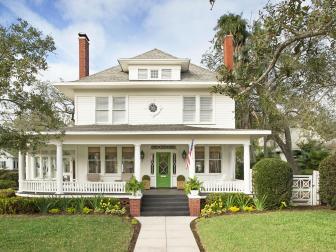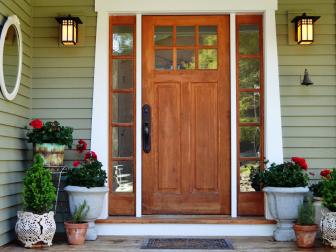How to Install a Porch Railing
The right front porch railing can add a lot of curb appeal to your home and help define your home's style. Learn how to install new railing on your porch.
Front porch railing can be a big part of your home’s façade, so it’s important that it matches your home’s style and it is proportionally correct. But the first thing you need to consider and research before installing a new porch railing is the building safety codes in your area. If you have an older home, don’t assume that you can replace the existing railing with something that is the same size. That existing railing may have been installed before building codes were created. Call your municipality and find out exactly what is required. You don’t want to find out that the railing didn’t meet code when you go to sell your house or have an insurance claim — that can turn out to be a costly mistake.
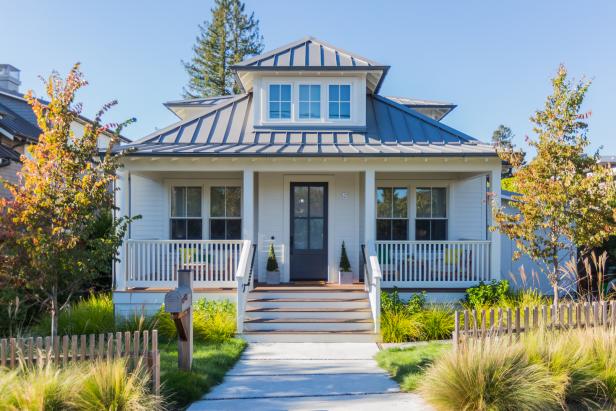
Victor M Samuel
Porch Railing + Home Styles
Putting up porch railing is fairly simple, but DIYers can encounter a few snags. "The biggest problem is not matching the railing to the style of the home," says Mark Demerly, chair of the American Institute of Architects' Custom Residential Architects Network. You may be tempted to purchase whatever style is on display at your local home supply store, but that could be a mistake. Do your research to find out what is right for your home. And don't just use the internet, drive around your area and look for homes similar to yours, somebody may already have the porch of your dreams.
Porch Railing Design Ideas 30 Photos
If you're lucky enough to have a front porch on your home, make sure to frame it with a handsome railing that will boost your curb appeal and make your entryway more welcoming.
Railing Materials
Porch railings can be constructed from wood, metal, stone or synthetic materials like composite wood or PVC. Or you can get a combination of materials such as a composite top and bottom rail with metal balusters. Your home style, climate and budget are the key factors in deciding which way to go. Also, consider maintenance. Wood railing may be cheaper, but you're going to have to paint it every few years while composite, PVC or metal railing requires nothing but an occasional washing.
Wood Railings
Wood is a classic, relatively inexpensive choice that suits a wide range of home styles and can be painted to match other elements of the home's exterior. If you don't find the right style at your home supply store, go to a lumber yard and put in a custom order. It may not cost as much as you think, and "will add a lot to the curb appeal of your house," Demerly says. He recommends using cedar rather than pressure-treated lumber. "When you get into 2x2s, pressure-treated pieces have a tendency to warp really fast. Cedar is much more stable."
To prevent pressure-treated railing from warping, make sure to apply primer to all sides of the railing, even those ends that won't be visible. This will prevent moisture from seeping into the wood. Then apply quality exterior paint. Depending on your climate, you may have to repaint every few years.
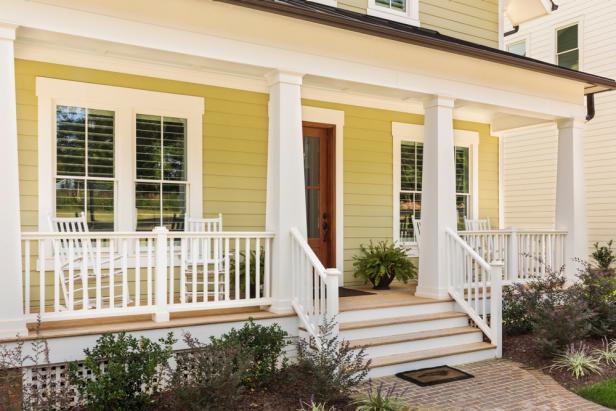
Shutterstock/David Papazian
Wood porch railing lends a classic look to this traditional-style home.
Metal Railings
While not infallible, metal products are more resistant to decay. Patterns range from fanciful to stark and should be selected based on the period of the home. Picket-style wrought-iron railings enhance a historical look and are a good option for traditional-style homes in climates not suited for wood. Stainless steel, galvanized steel, and aluminum are some of the most popular materials for contemporary and midcentury-modern homes.
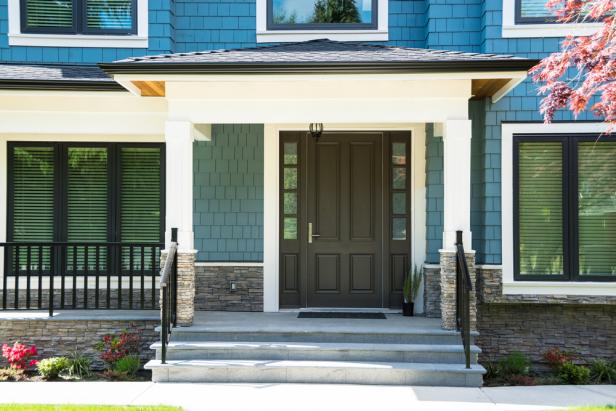
Shutterstock/Imagenet
Black metal railing with matching window trim adds a sleek look to this contemporary-style house.
Synthetic Railings
Synthetic railings include PVC and composite materials that blend wood particles with resin and vinyl. The surface can be colored and textured to resemble natural wood. Synthetics tend to be more expensive than wood, but the benefits may be worth the cost — particularly in humid climates.
"It doesn't fade, warp, split, splinter or crack," says Paul Bichler, owner of Tri-County Marine, a contractor in Fort Lauderdale, Fla. "You don't need to seal it or paint it. It's maintenance-free." The product is so durable that some manufacturers offer a 30-year warranty.
Other than the price, the drawback to PVC or composite railings is that they come in a limited number of basic styles. Depending on the manufacturer, you may find picket-style railings and a few square or round patterns. The choices may be too limited for homeowners aiming for a highly customized look.
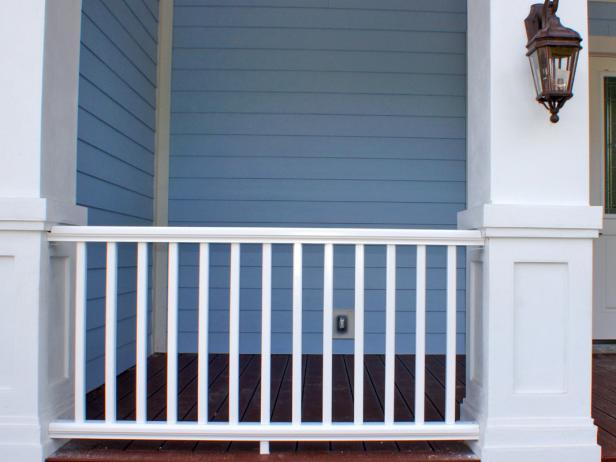
How to Install a Railing Section
1. Prep the Porch
Before installing a new railing, take time to inspect the condition of your porch. Make any necessary repairs to the floorboards or siding. If you're building a new home, paint the exterior and install the porch flooring before building the railing. Otherwise, you'll have to install the flooring around the railing posts, and the railing may get damaged in the process.
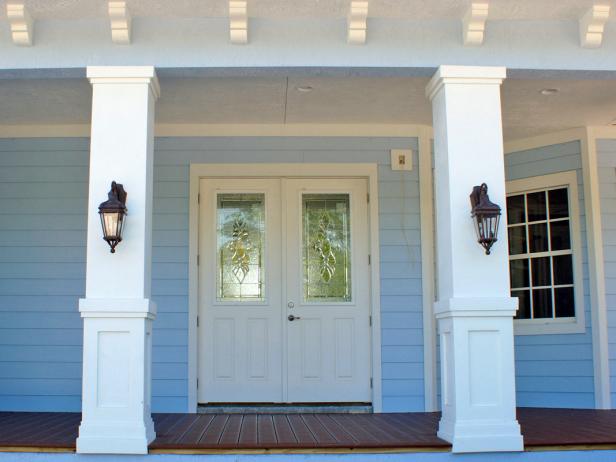
2. Prime Wood Railing
Once you've selected your materials, determine whether they need to be primed. If you're using natural wood, and it doesn't come pre-primed, apply a coat of primer on all of the railing elements before you begin the installation. Be sure to use a primer formulated for your specific material. Synthetic materials and metal coated with a pre-colored powder finish generally do not need priming.
3. Install the Posts (Balusters)
Architects use the term balusters to describe the vertical support posts in a railing. The individual balusters are the first element to be installed. They must be firmly secured to the supporting structure below the floorboards — not to the floorboards themselves. For a porch with a concrete foundation, this requires drilling a post-hole into the concrete before securing the post.
For synthetic railings, a PVC or composite shell typically covers a pressure-treated wooden post that provides the actual support. The balusters are the key to a stable porch railing, so make sure they are properly aligned and secured.
Note: If your porch has pre-existing columns, you may be able to use these as balusters instead of installing posts.
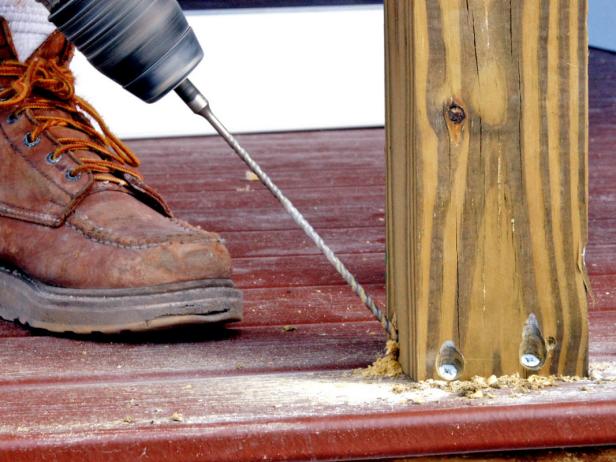
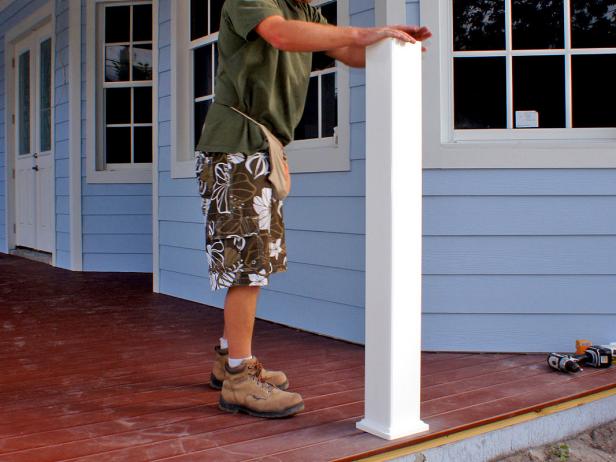
4. Measure the Distance Between Balusters
Carefully measure the distance between each pair of posts or columns. This is known as "field verifying" your dimensions. It allows you to make precise cuts to the horizontal segments of your railing, called balustrades, so they will fit perfectly between the balusters.
5. Install the Balustrades
Secure the balustrades to the posts or columns with screws or brackets, as is called for by the type of material you are using. Do not install the balustrades parallel to the ground, but at a slight angle. This is known as a positive slope and allows water to drain off the upward-facing surfaces of your railing.
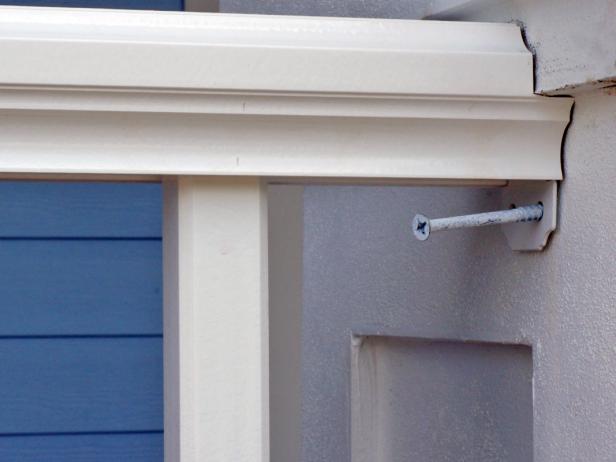
6. Finishing Touches
Once the railing elements are secure, caulk all of the joints. Allow the caulk to dry and apply a final coat of paint if desired.
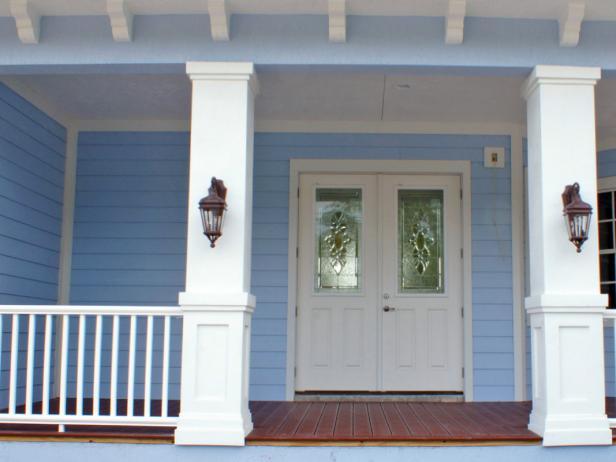
28 Ways to Decorate Your Front Porch or Entryway 28 Photos
Greet guests and add curb appeal to your home by adding fresh color and unique style to your front entry.







